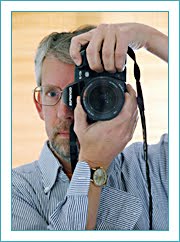The last two weeks of my recent trip to Japan were spent mostly on Ōshima, in Ehime Prefecture, with family, but they also included side trips to the nearby island of Ōmishima and to Matsuyama, Kure and Tomonoura, the latter two both near Hiroshima on Japan's main Island of Honshu, and again to Kurashiki, also on Honshu.
The island of Ōshima is at the center of the Inland Sea area controlled during Japan's Sengoku Period by the Murakami Suigun (traders, guides, and occasional pirates) and at the north end of the island is the Murakami Suigun Museum, which focuses on the maritime history of the Murakami Suigun.
There is a great deal to see at the museum, but it's not well labeled in English – although well enough for a non-Japanese speaker to get some idea of the activities of the group and what areas were under its control. The tidal currents in the Inland Sea are notoriously dangerous, and even today the shipping lanes through Japan's Inland Sea are among the most tightly controlled in the world. The Murakami Suigun primarily acted as traders and guides helping ships navigate safely through the boiling whirlpools created by the shifting tides between the islands. In return for their services as guides, they took a percentage of the goods passing through.
My perspective may be unusual, but, to me, most exciting object in the museum is a red, cochineal-dyed coat. "Cochineal" refers to the red dye (also known as "carmine") and to the insect from which cochineal is derived (Dactylopius coccus), a scale insect native to tropical and subtropical South America and into Mexico and the Southwest US. It parasitizes cacti in the genus Opuntia (the prickly pears), sucking moisture and nutrients from the host plant. Cochineal insects on the pads of the cacti are brushed off the plants and dried. Carminic acid can be extracted from the dried insects and their eggs, which is then combined with aluminium or calcium salts to make cochineal, the dye.
Today, cochineal is mostly used as a food additive (as a natural colorant), but it was once in high demand for textile production. It was highly prized because carmine, or cochineal, is bright red and, importantly, it is colorfast. Most other natural red dyes are fugitive. The Murakami Suigun Museum's red coat (still brilliantly red after almost two hundred years) and faded red flags (dyed not with cochineal but with safflower (Carthamus tinctorius), known in Japanese as benibana) illustrate the difference. As cochineal insects live only on cacti native to the new world, far from Europe and Asia, the dye was rare and expensive before the development of synthetic dyes. It is quite remarkable that cochineal was being used in Japan in this period. The bright red coat in the Museum's collection strikes me as an extraordinary artifact.
Kure, is today best known for its naval base. You might say Kure is to the Japan Maritime Self Defense Force what Mare Island once was to the US Navy. Kure continues to be one of only two submarine bases in Japan and all of Japan's submariners are trained there. Kure is also remembered for the most famous of the many ships built in its shipyards, which have been in continues operation since the Meiji Period – the battleship Yamato, the largest battle ship ever constructed (she displaced 71,000 long tons when fully loaded and carried nine 18-inch guns, the largest guns ever mounted on a warship of any kind).
Despite her size and big guns, she was sunk in April of 1945 by US carrier planes; by the end of WWII, battleships, vulnerable to air attack, were essentially obsolete. In addition to the still-operational shipyards and the Maritime Self Defense Force base, Kure has a museum that focuses on minesweeping and submarine technology, featuring a full-sized submarine, which incudes interactive exhibits. The second floor focuses on minesweeping, with exhibits showing the many different types of mines and illustrating minesweeping techniques.
The history of minesweeping after WWII presented there is rather interesting. I had not been aware of the extent to which the US mined Japanese waters during WWII. Mines were still being removed from Japan's waterways well into the early 1950s and beyond. Typically for Japan, which in official contexts likes to focus solely on how Japan suffered during WWII, there is little mention of the war itself or of the activities of Japanese submarines during the war. The museum – as it is housed in an actual decommissioned submarine that sits in a giant cradle in the middle of a street – is a somewhat startling sight.
After visiting Kure, we went to Tomonoura, near Fukuyama. The town is known for its harbor (which has been active for centuries) and historical buildings surrounding the harbor area. These are in a similar style to the well-preserved buildings in Kurashiki, but almost none in Tomonoura have been restored, so, compared with Kurashiki, it looks rather dilapidated. As we visited in the rain, we didn't stay long.
One highlight of the last two weeks was an excellent dinner at Fenua on Oshima, a restaurant that focuses on traditional French cuisine, heavily influenced by locally available ingredients, run by the owner/chef (all by himself), who studied for years in France and ran a successful French restaurant in Tokyo for many years before retiring to the countryside on the island. In the evening, only one couple is seated. It can be hard, therefore, to get reservations but worth the effort. The wine selection is very good. Not cheap, but cheap in dollar terms compared with what the same number of dollars will buy you in the US (about $90 per person for the set course not including wine). Fenua is an unexpected oasis of European culture in rural Japan. The beautiful building, with views over the ocean was designed and built by Kengo Kuma and Associates.















%20Borderless%20M%202.jpg)



